





















Some material in this lecture is adapted from the teaching materials of the book “Web Services: Concepts, Architectures and Applications” and is thus Copyright © 2003 Gustavo Alonso, ETH Zürich and/or Copyright © 2004 Springer-Verlag Berlin Heidelberg.
All other material is Copyright © 2006 Kenneth M. Anderson
Middleware facilitates and manages the interaction between applications across heterogeneous computing platforms. It is the architectural solution to the problem of integrating a collection of servers and applications under a common service interface.
— Introduction to Chapter 2 of our Textbook
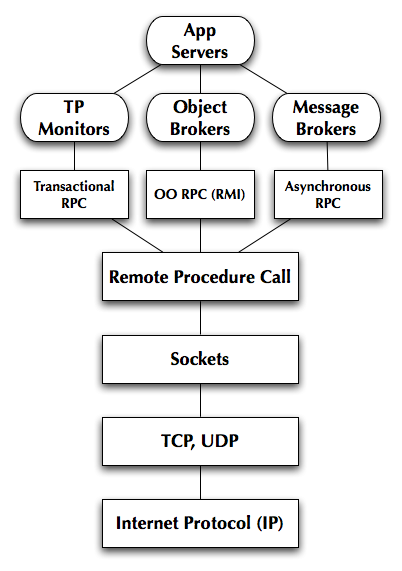 |
|
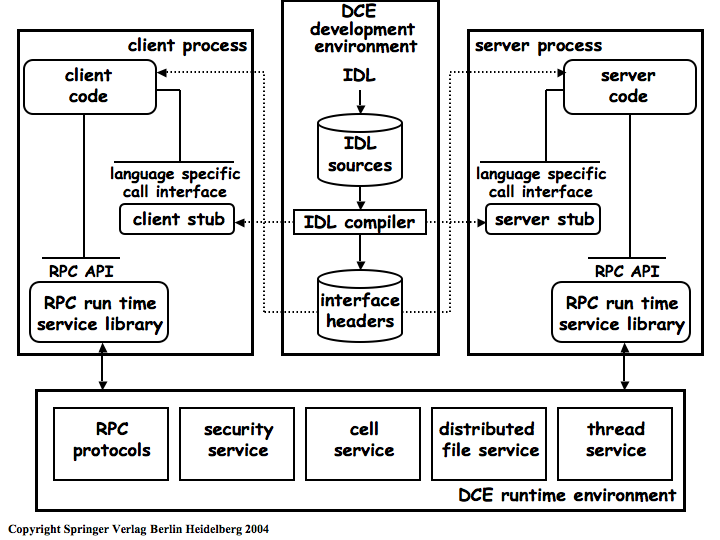
| RPC-Based Systems | RPC is the most basic form of middleware. It is used as a foundation for all other types of middleware. |
|---|---|
| TP Monitors | TP Monitors are the oldest and best-known form of middleware. They are also the most reliable, best tested, and most stable technology in the EAI arena. TP Monitors can be seen as RPC with transactional capabilities and are classified into TP-lite and TP-heavy systems. |
| Object Brokers | A middleware platform that supports the use of RPC in object-oriented languages; aka RMI |
| Object Monitors | TP Monitors extended with APIs in object-oriented languages |
| Message-Oriented Middleware | A middleware system built around the model of asynchronous RPC and persistent message queues. Tools are provided to create a number of transactional, persistent queues and allow programs to manipulate both local and remote queues. |
| Message Brokers | A specialization of MOM systems that can transform and/or filter messages as they move through message queues. They can also dynamically select message recipients based on the content of a message. |
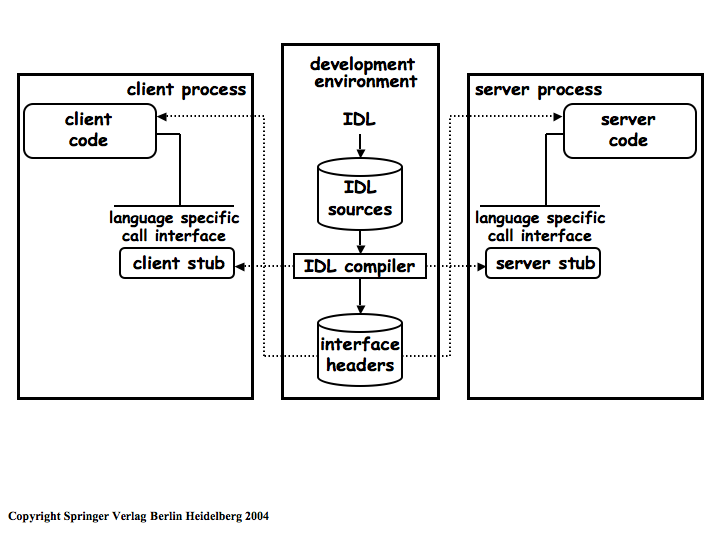
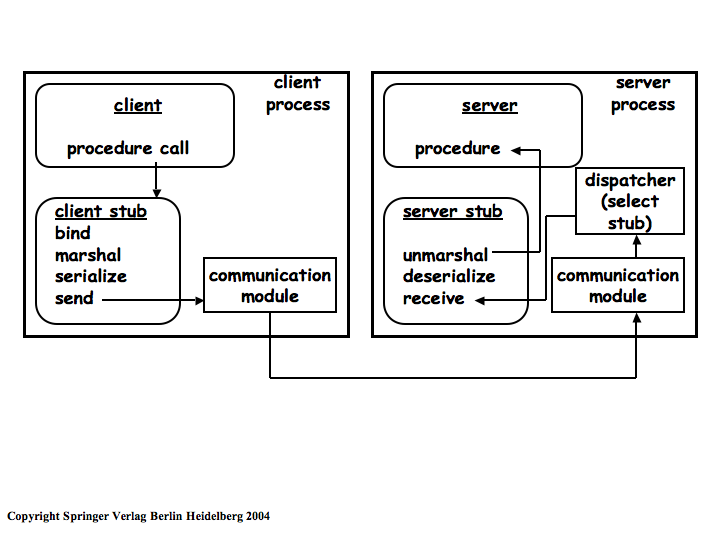
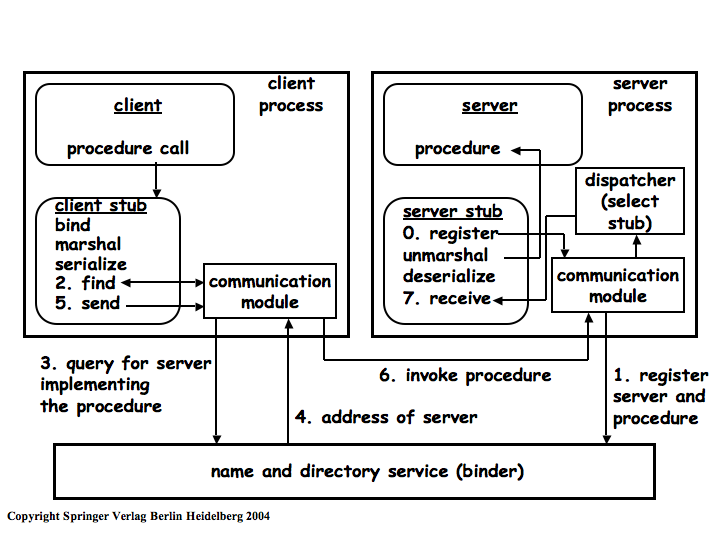
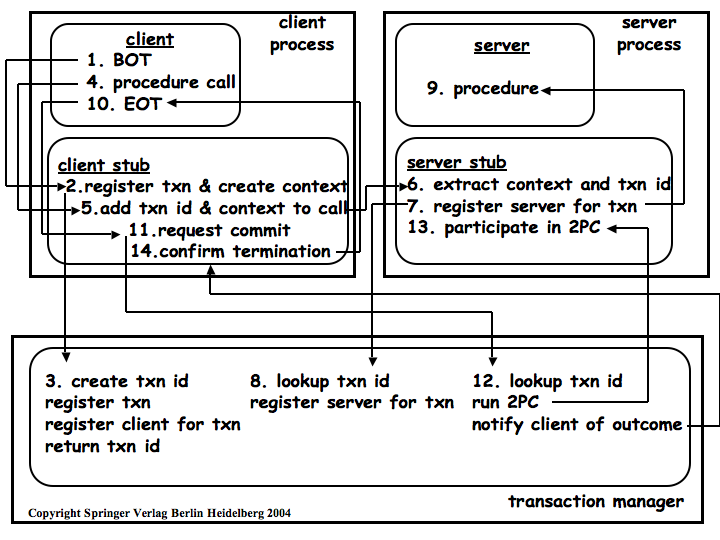
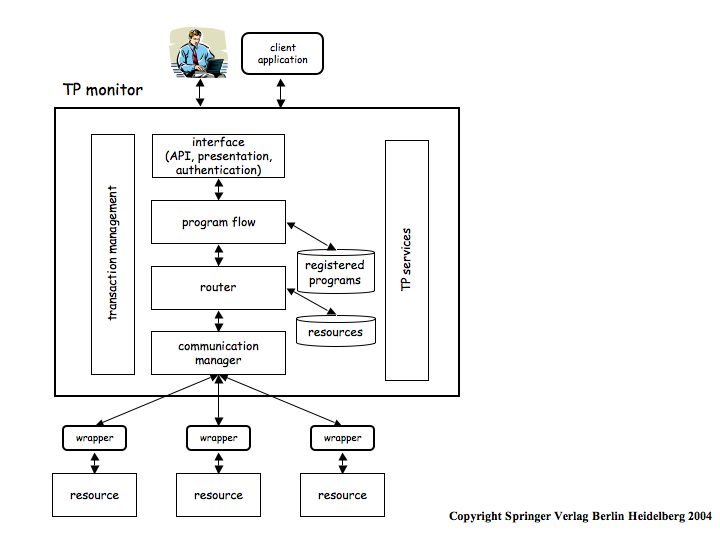 |
|
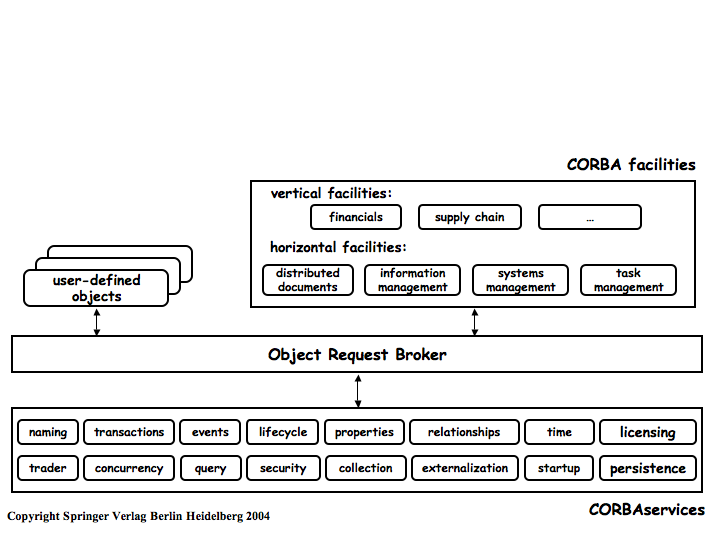
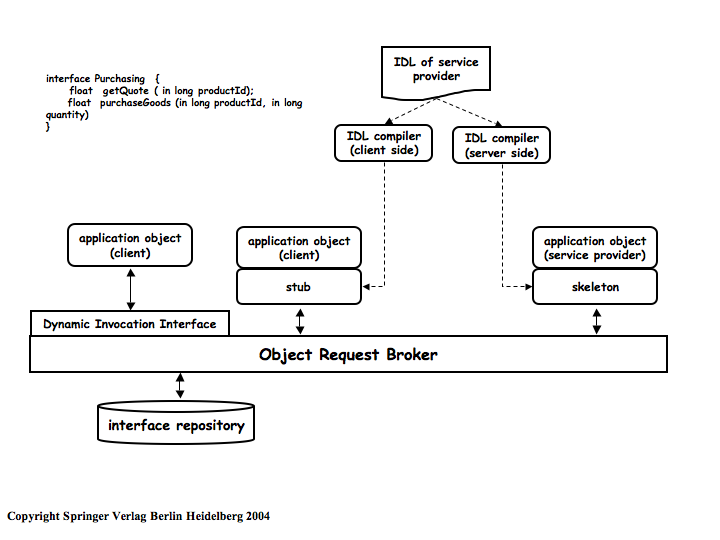
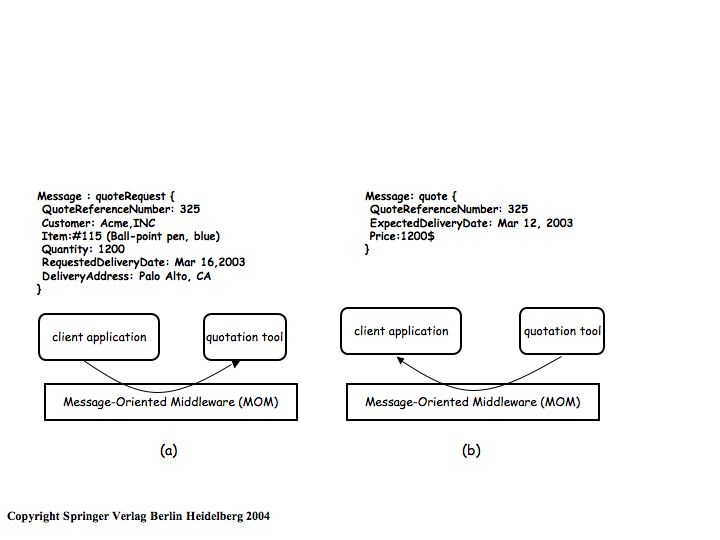
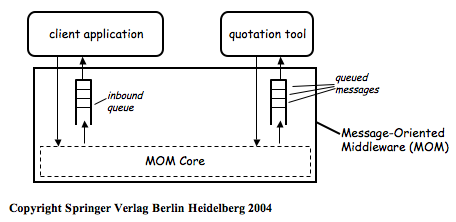 |
|
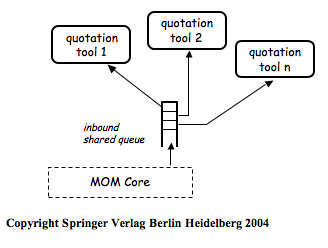 |
|